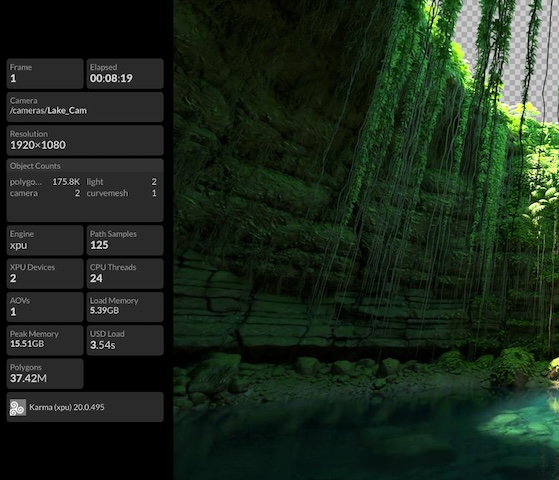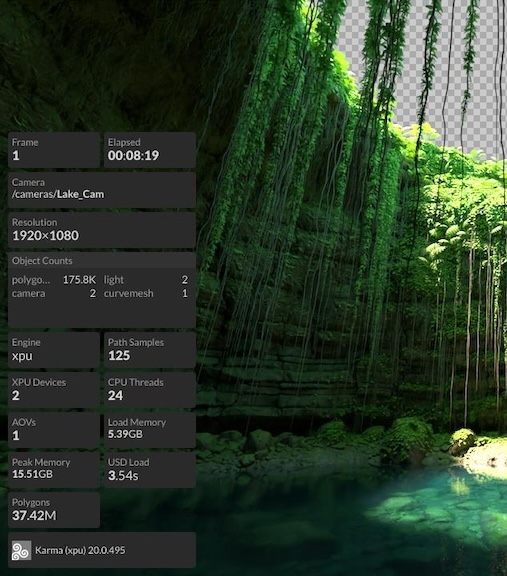| On this page |
Overview ¶
During rendering, Karma saves a variety of statistics about the render process. When the render is completed, the husk render utility saves the statistics as metadata in the rendered EXR image.
You can extract and view the render statistics for on-going and completed renders using the following features.
Render stats sidebar ¶
Render report ¶
The renderstatsreport utility generates an HTML render report that lists statistics extracted from a rendered EXR file (Learn more).

Performance section ¶
The Performance section is of particular interest and provides an overview about render times, rays sent, memory allocation and primvars.
| Parameter | Description |
|---|---|
|
Elapsed |
This is the time that was required to render the image. |
|
Load Time |
The time it took to load the USD scene. |
|
First Pixel |
The time from processing the scene to rendering the first pixel. |
|
Load Memory |
The memory after loading the USD scene, but before rendering. |
|
Peak Memory |
This value includes all the libraries and executables that are required to run the program. For example, These all add up and are a base memory requirement regardless of the scene complexity. |
|
Peak Raster Memory |
Hydra requires that the render delegate allocate rasters for every AOV. This is the peak memory used by these rasters. |
|
Primvar Cache Items |
This is the memory that Karma uses to store primvar (geometry values). So, |
|
Time Spent |
The various values are the sum of the times for all threads given in seconds. So, if there are 12 threads/cores and the time reported is 24 seconds, that would be roughly be 2 seconds of wall clock time. It’s not perfectly linear, but once the first pixel is computed, the renderer is able to scale close to linearly based on the number of cores. |
Render overlay utility ¶
The renderstatsoverlay utility generates a (possibly resized) JPG or PNG with render stats burned into it (Learn more).

The utility has options for various ways of burning the stats into the image.


Extracting render stats from an EXR file as JSON ¶
You can extract the raw image metadata from an EXR as JSON using the iinfo utility included with Houdini:
iinfo -J example.exr
